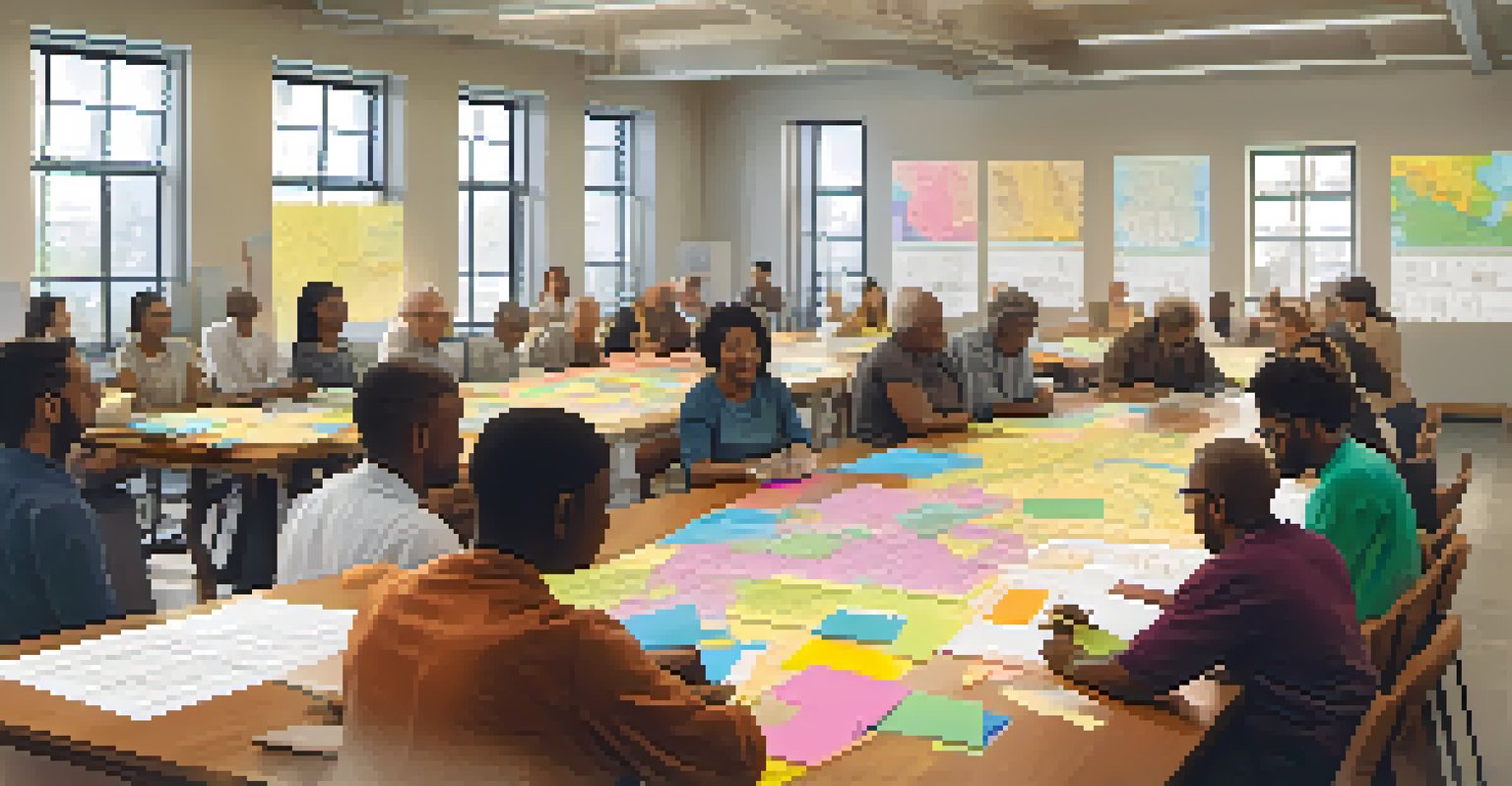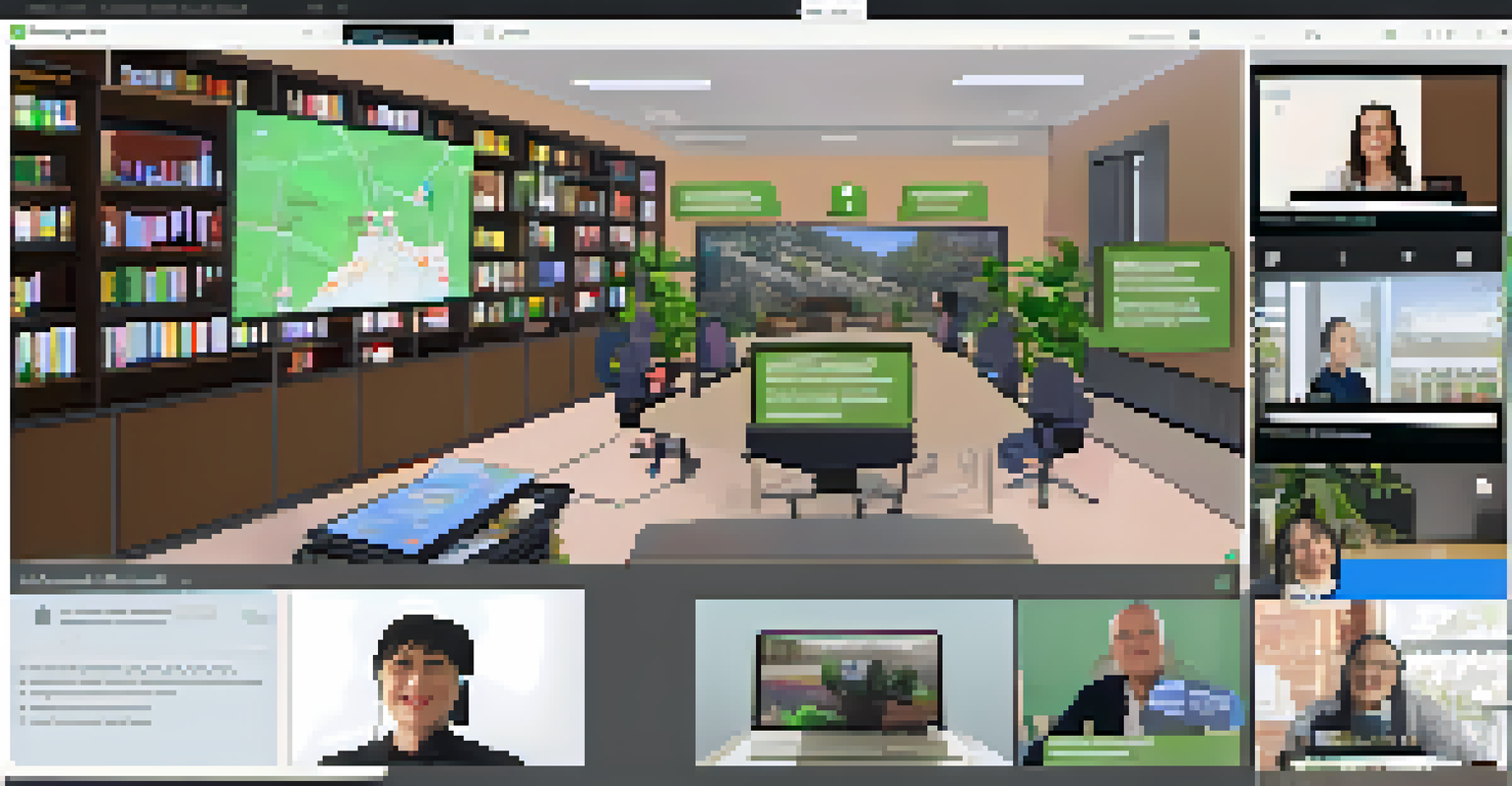Engaging Diverse Communities in NYC Urban Planning Efforts

The Importance of Community Engagement in Urban Planning
Community engagement is crucial in urban planning as it ensures the needs and voices of residents are heard. When local communities participate in the planning process, it leads to more effective and inclusive solutions. For example, when designing a new park, incorporating community input can help identify the types of amenities that will truly benefit the neighborhood.
Community engagement is about inviting people into the process, and when we do that, we create better outcomes for everyone involved.
Moreover, engaging diverse communities fosters a sense of ownership and pride among residents. When people feel their opinions matter, they’re more likely to take care of their environment and advocate for its improvement. This kind of active involvement can transform urban spaces into thriving communal hubs.
Lastly, effective community engagement can lead to better decision-making. Planners who listen to a wide array of perspectives are more equipped to create strategies that address social equity, sustainability, and economic development within the urban landscape.
Understanding NYC’s Diverse Community Landscape
New York City is a melting pot of cultures, languages, and backgrounds, making its community landscape incredibly diverse. This diversity presents both opportunities and challenges for urban planners. Understanding the unique needs and priorities of different communities is essential for creating inclusive urban environments.

For instance, neighborhoods like Chinatown and Little Italy have distinct cultural identities that must be respected and preserved. Planners need to recognize these identities when proposing changes, ensuring that new developments enhance rather than detract from existing community character.
Community Voices Shape Urban Planning
Engaging local residents in the planning process leads to more effective and inclusive urban solutions.
Additionally, language barriers can hinder effective communication between planners and communities. Providing multilingual resources and translators can help bridge this gap, allowing for more meaningful participation from all residents.
Barriers to Effective Community Engagement
Despite the importance of community engagement, several barriers can impede effective participation. One major obstacle is the lack of awareness or understanding of urban planning processes among community members. Many residents may feel intimidated or unsure about how to express their opinions, leading to underrepresentation.
The best way to predict the future is to create it together with the people who will be affected by it.
Another significant barrier is the timing and location of public meetings. If events are held at inconvenient times or in inaccessible locations, it can exclude key voices from the discussion. To truly engage diverse communities, planners must be strategic about meeting logistics.
Lastly, skepticism towards government initiatives can deter community involvement. Residents who have previously experienced unfulfilled promises may be reluctant to participate. Building trust through consistent communication and follow-through is vital to overcoming this skepticism.
Strategies for Inclusive Community Engagement
To foster inclusive community engagement, urban planners can adopt various strategies. First, employing a variety of outreach methods—such as social media, flyers, and community meetings—can help reach a broader audience. Each community may respond better to different types of communication, so flexibility is key.
Additionally, creating participatory workshops can empower residents to contribute their ideas directly. These interactive sessions allow for brainstorming and collaboration, making planning feel more like a community effort rather than a top-down approach.
Diversity Enhances Community Engagement
Understanding the unique needs of New York City's diverse communities is crucial for creating inclusive urban environments.
Finally, planners should consider forming advisory boards that include community representatives. These boards can provide ongoing feedback and ensure that diverse perspectives are integrated throughout the planning process.
Leveraging Technology for Community Engagement
Technology plays a significant role in enhancing community engagement in urban planning. Digital platforms can provide accessible channels for residents to share their thoughts and ideas, even if they cannot attend in-person meetings. For example, online surveys and interactive mapping tools allow residents to visualize changes and give feedback from the comfort of their homes.
Social media can also be a powerful tool for outreach and engagement. By sharing updates and soliciting input on platforms like Instagram and Twitter, planners can create a two-way dialogue with the community, fostering a sense of connection and involvement.
Moreover, virtual town halls have gained popularity, especially in the post-pandemic world. These online forums can draw larger audiences, making it easier for diverse community members to participate without the barriers of travel or scheduling conflicts.
Highlighting Successful Case Studies in NYC
New York City has seen several successful examples of engaging diverse communities in urban planning. One standout case is the Lower East Side's East Side Coastal Resiliency Project, which involved extensive community outreach to address climate change impacts. Residents played a pivotal role in shaping design elements that reflect their needs and concerns.
Another example is the Brooklyn Waterfront Greenway project, which transformed underutilized spaces into vibrant public areas. Through workshops and community events, local residents contributed to the vision for the greenway, ensuring it served as a recreational space for everyone.
Technology Boosts Participation Efforts
Leveraging digital tools can enhance community engagement by providing accessible platforms for feedback and interaction.
These case studies demonstrate that when communities are actively involved, the outcomes are not only more effective but also more reflective of the unique character and needs of the neighborhoods they serve.
The Future of Community Engagement in Urban Planning
Looking ahead, the future of community engagement in urban planning in NYC seems promising. As awareness of the importance of diverse participation grows, planners are increasingly recognizing the value of community input. This shift towards inclusivity could lead to more equitable urban environments that truly reflect the voices of all residents.
Emerging technologies, such as virtual reality, may further enhance community engagement by allowing residents to visualize proposed changes in immersive ways. This could bridge the gap between technical jargon and community understanding, making planning more accessible.

Ultimately, fostering a culture of engagement will require ongoing commitment from both planners and community members. By working together, they can ensure that NYC continues to thrive as a vibrant and inclusive urban space for generations to come.